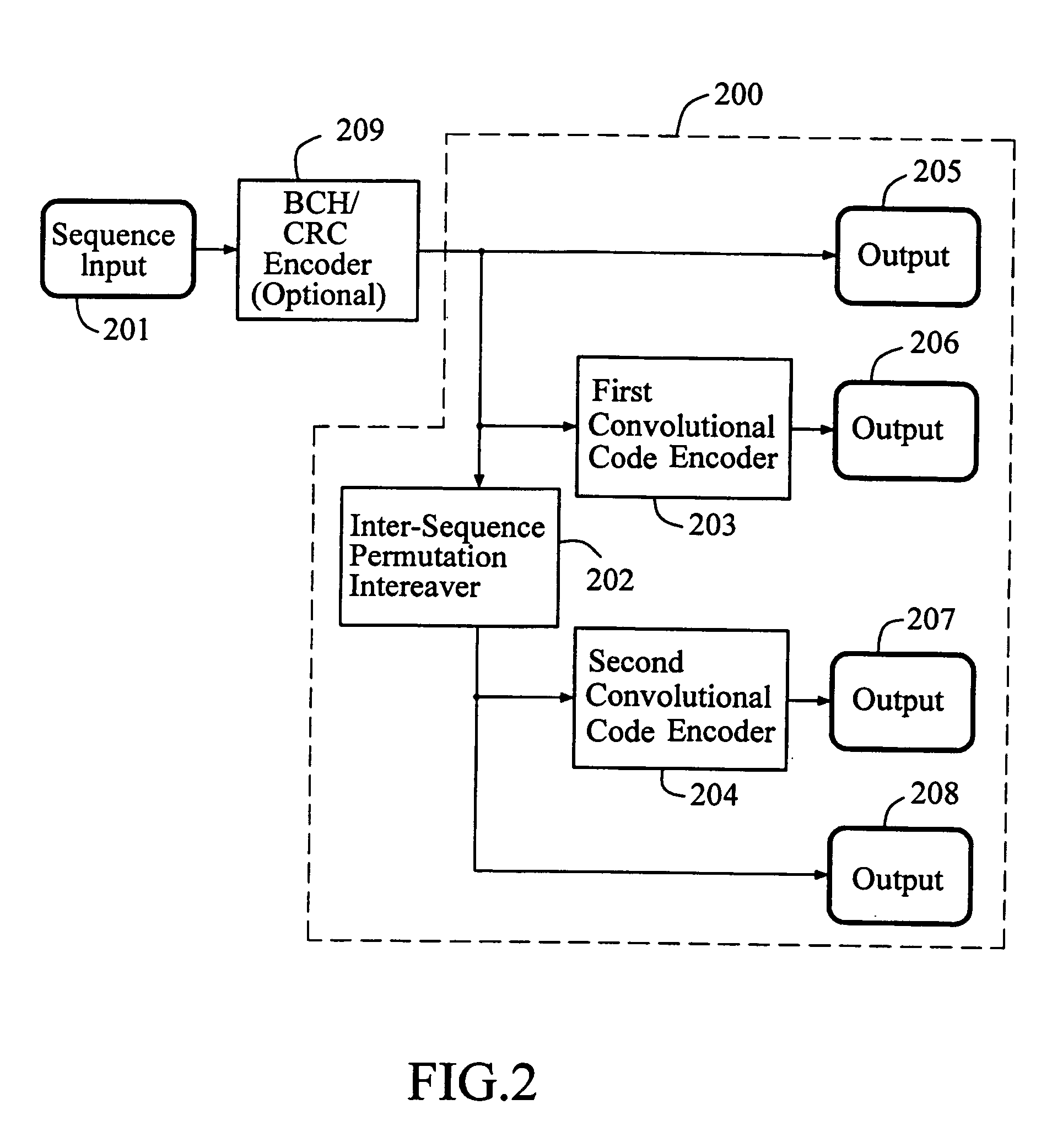Inter-sequence permutation turbo code system and operation methods thereof
a turbo code system and sequence permutation technology, applied in the field of turbo code systems, can solve the problems of large memory space for the temporary received samples, memory usage, and the inability to decode more than ten sequences at the same time, and achieve the effect of improving the performance of tcs
- Summary
- Abstract
- Description
- Claims
- Application Information
AI Technical Summary
Benefits of technology
Problems solved by technology
Method used
Image
Examples
Embodiment Construction
[0024] The details to the exemplary embodiments of the invention will be described as follows and the same reference numbers are used throughout the drawings to refer to the same or like parts.
[0025] As stated above, ISP is a concept permuting between different sequences, which is easy to be comprehended for persons skilled in the art. For ease of understanding, we can take the sequences as matrices. One element in one matrix, if it is to be permuted, will be moved to one coordinate in the same or another matrix with the ordinal number within a span prior or successive to the element. In the present invention, preferably, one sequence is to be inter-sequence permuted with two other sequences which are consecutively before and after the sequence to be permuted. One exemplary procedure of ISP is given in FIG. 1, wherein i is ordinal number of sequences, R and P are ordinal numbers of matrices, m and n are ordinal numbers of elements in the R-th and P-th matrices, where 0≦m,n[0026] st...
PUM
 Login to View More
Login to View More Abstract
Description
Claims
Application Information
 Login to View More
Login to View More - R&D
- Intellectual Property
- Life Sciences
- Materials
- Tech Scout
- Unparalleled Data Quality
- Higher Quality Content
- 60% Fewer Hallucinations
Browse by: Latest US Patents, China's latest patents, Technical Efficacy Thesaurus, Application Domain, Technology Topic, Popular Technical Reports.
© 2025 PatSnap. All rights reserved.Legal|Privacy policy|Modern Slavery Act Transparency Statement|Sitemap|About US| Contact US: help@patsnap.com



